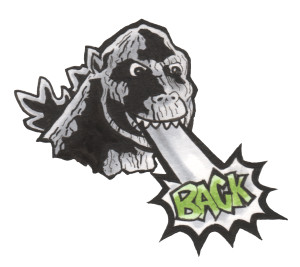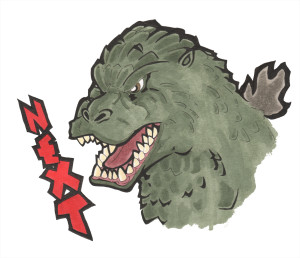Godzilla VS. Hedorah (AKA Godzilla VS The Smog Monster) ~ 1971, Yoshimitsu Banno – Japan
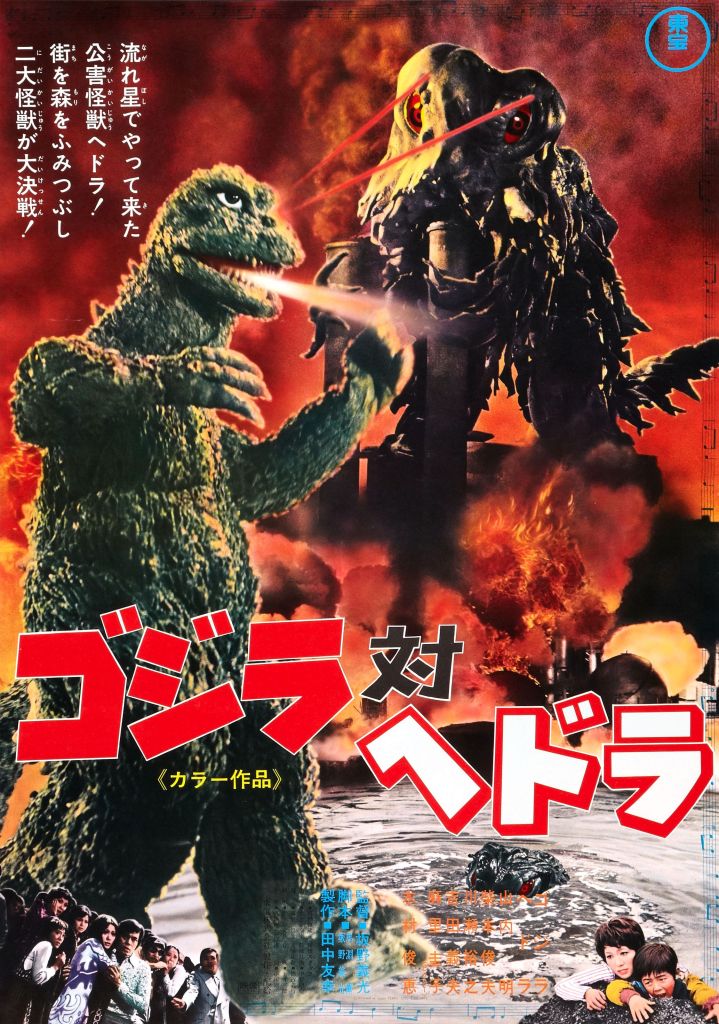
I’m going a little off the rez with this one, because I’ve learned that common G-Fan consensus is that this is a lesser, or even one of the worst of the Showa era Godzilla flicks, and I totally love this movie.
Yes, I’ll admit that it’s goofy, but it was only a few movies ago that Godzilla did a damn victory dance on Planet X. Is this really that much goofier? That was a real low point. And anyway, Godzilla VS Hedorah is also notably darker than it’s recent predecessors, and it makes up for its various short comings by having the most fascinating composition seen in a Godzilla film up to that point, with the exception of the original 1954 film. This is the first Godzilla movie to actively campaign from a new perspective, the perspective of Japan’s 1960’s/70’s youth culture, which is exciting. It’s kinda like younger generation managed to wrestle the megaphone away from their parents and, for the first time, finally had a chance to make their own statement. I totally think it holds up, Godzilla VS Hedorah proves that there is enough room within the Godzilla metaphor that it can mean more than one idea and carry relevance from a broad range of individual perspectives. If Jun Fukuda’s turn in the directors chair felt like a breath of fresh air back in Ebirah: Horror of the Deep, Yoshimitsu Banno here feels like a whirling hurricane of fresh air, heaving your home off it’s foundation and smashing your car windshield.
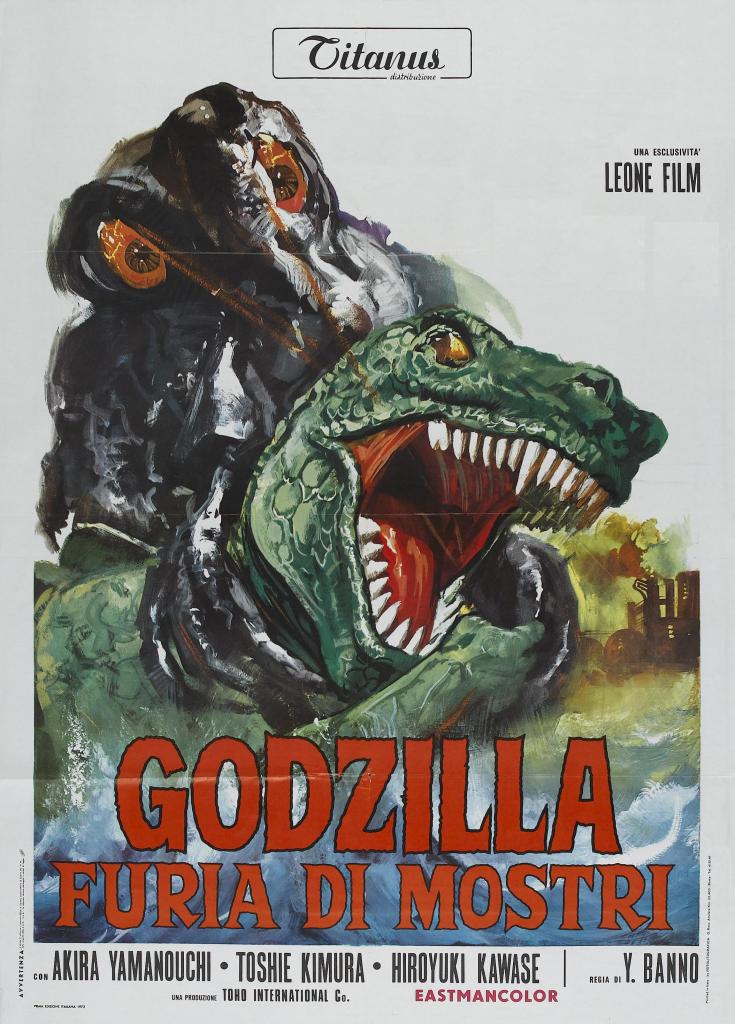
THE PLOT~ Japan has become horribly, horribly polluted. Like, incredibly polluted. It’s pretty over the top. From within this bog of toxic muck and rotting trash, we have the birth of a new organism, totally unlike any other on Earth; Hedorah, a big tadpole made out of slime and garbage that thrives off pollutants and likes to sink boats. Hedorah makes a big stink doing just that, and Japanese scientist Dr. Yano sets out to study the creature, because he is a scientist, and monster studying is the only steady work a scientist can get in 1970’s Japan.
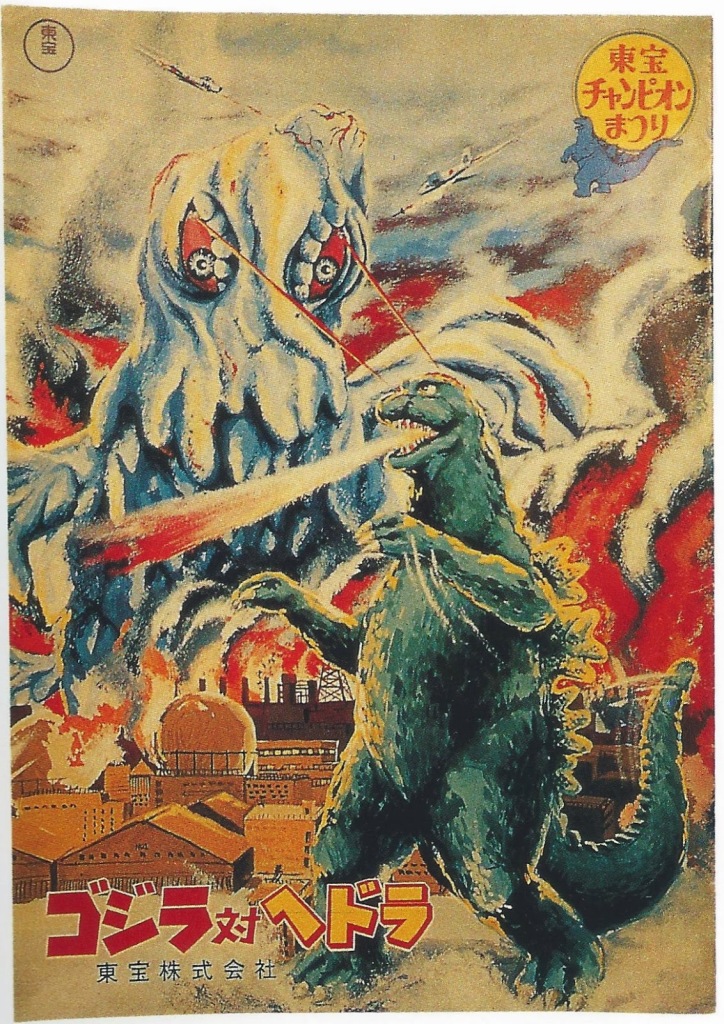
More central to the story is Dr. Yano’s son, Ken, who is actually our main character. We see the film from his perspective. Ken, like many Japanese children, has a fascination with Godzilla, who by this time had become less of an atomic, dinosauric bogeyman and more of a weird, semi-anthropomorphized antihero. Ken believes that Godzilla will save mankind from the Hedorah’s deadly toxic rampage. And Godzilla totally does.
When we meet Ke n, he’s playing with Godzilla toys in his backyard. Throughout the film he claims to have dreams and premonitions of Godzilla rising up out of the sea to rescue mankind from Hedorah, who has evolved into a biped with the ability to fly, and has decimated Tokyo, leaving many dead. The film is presented in a strange, almost dreamlike manner, inter-cutting jazzy 70’s split-screen techniques, frightening hallucination/dream sequences, and even occasional short animated sequences, which really lends credibility to the idea that this film could actually just be Ken’s fantasy. Perhaps we never really leave the backyard and Ken’s clunky, plastic monster dolls are playing out the events of Godzilla VS Hedorah for us. While the movie certainly presents itself as being cannon, there is enough here to justify the “child’s fantasy” idea, and the movie is open ended enough, if you want it to be. Several important monster related plot points are triggered by Ken’s “visions”, and these sometimes carry an odd imaginative feel, such as when Ken claims to spot Godzilla lurking unseen by anyone else amongst the city’s skyline while riding a roller coaster.
n, he’s playing with Godzilla toys in his backyard. Throughout the film he claims to have dreams and premonitions of Godzilla rising up out of the sea to rescue mankind from Hedorah, who has evolved into a biped with the ability to fly, and has decimated Tokyo, leaving many dead. The film is presented in a strange, almost dreamlike manner, inter-cutting jazzy 70’s split-screen techniques, frightening hallucination/dream sequences, and even occasional short animated sequences, which really lends credibility to the idea that this film could actually just be Ken’s fantasy. Perhaps we never really leave the backyard and Ken’s clunky, plastic monster dolls are playing out the events of Godzilla VS Hedorah for us. While the movie certainly presents itself as being cannon, there is enough here to justify the “child’s fantasy” idea, and the movie is open ended enough, if you want it to be. Several important monster related plot points are triggered by Ken’s “visions”, and these sometimes carry an odd imaginative feel, such as when Ken claims to spot Godzilla lurking unseen by anyone else amongst the city’s skyline while riding a roller coaster.
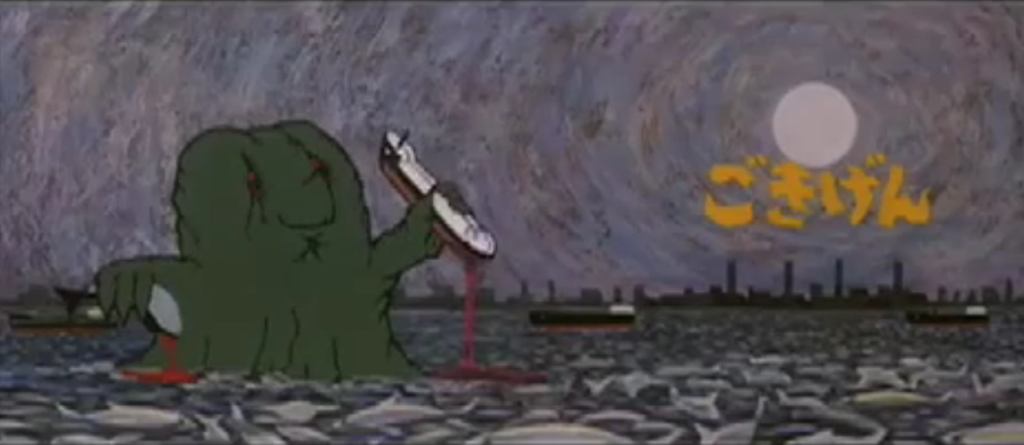 Animation was weird in the 70’s.
Animation was weird in the 70’s.
Another important character in the film is Yukio. Yukio represents the more active, optimistic youth culture of the Japanese 70’s. He and his peers are eager to try and wrestle the fate of Japan out of the hands of their elders, who have apparently mismanaged it to the point that a damn trash monster was born. Yukio organizes a youth demonstration to take place atop Mt. Fuji when the fate of Japan is at it’s most bleak, and this sequence is especially painterly, and also telling of the film’s thesis statement. While Yukio and his cohorts dance merrily to some swinging, funky 70’s jams in the face of certain Smog Monster related doom, strange, aged figures sit in silence hiding amongst the tall grass just outside the light of the bonfires. These figures are motionless, and drained of color, they merely watch from their hiding places as the young people take the stage. While the appearance of these figures isn’t explained, I think the movie is fairly open about it’s dual-message intent. One could argue that they are merely the elderly locals, watching with curiosity the antics of these teens from the city. They could also quite likely be literal ghosts, mournful at their own shortcomings in securing a bright future for their country, and eager to see how this new generation will handle their nation’s new challenges. The actual truth behind what these figures are is entirely inconsequential because the film’s thesis remains the unchanged by a definitive answer. Whichever they are, they serve the same purpose, and I feel convinced that leaving things like this somewhat open for interpretation is more Banno’s style anyway. I’d love to hear what he had to say about them.
Ken being our lens through which we view the world in Godzilla Versus Hedorah is a conscious and powerful story telling device even beyond giving the movie the plausible claim to being a child’s fantasy. It let’s us understand the severity of the situation in a way that couldn’t carry the same weight from another point of view. For Ken, the outcome of this story is even more crucial, because as a child, Ken represents the future. In fact, he and Yukio form a two headed youth culture monster with Yukoo representing the young adults of today who are now arresting control of the situation from their woefully inadequate predecessors, and Ken representing the youth of tomorrow, themselves still powerless to do anything but hope. This was this new generations chance to say something, and through these two, Godzilla takes on a new meaning, shedding his role as a grim specter of atomic war and instead becoming a figurehead for socially motivated change. He burns up the old with his radioactive breath and paves the way for a new age of improved, socially conscious adults to build a world reflective of their values. In this film, Godzilla means, change, improvement, and rebirth, and that’s a testament to his validity as a cultural phenomena. Some might argue that this is throwing out the component of Gojira that worked best, but I would point that even religious figures can take up new characteristics reflective of their eras. All this lends more legitimacy to Godzilla as an idea, not less, because it proves that he has become a broader metaphor and can represent a new, yet equally crucial idea for each generation. And anyway, by this point, I think we had already strayed so far from his nuclear horror film roots that the integrity of this franchise was more than capable of handling this additional change. Again, Godzilla, by this time, had become a bigger cultural phenomena than Gojira could have predicted, and it now belonged to the entire world. The perspective of one nation, locked in one moment in history, could no longer contain this figure, he had made the leap from a plot device, to a folk character, something few intellectual properties can hope to achieve.
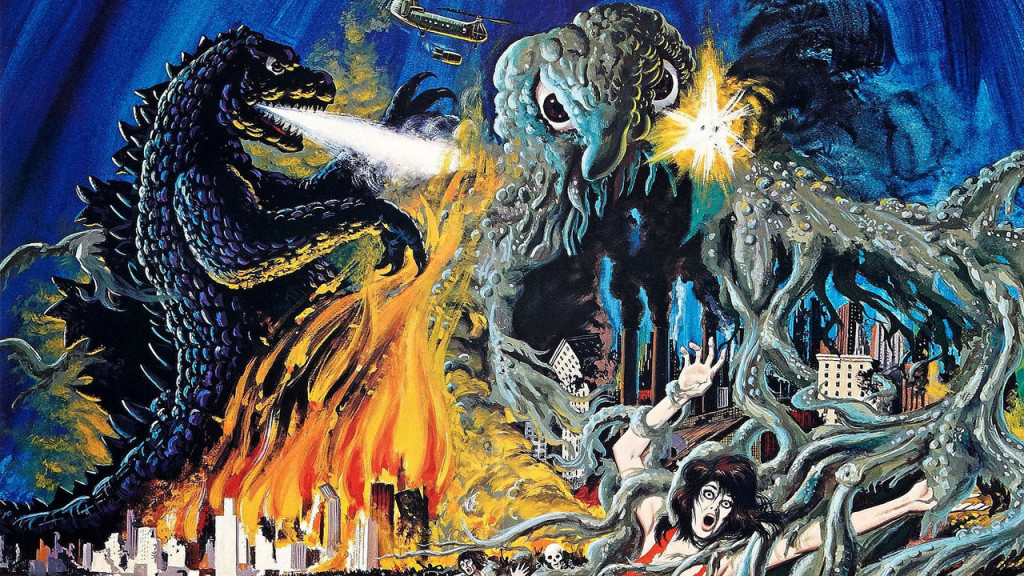
So, while Godzilla VS Hedorah is in some ways the most childish entry yet, it’s also the darkest Godzilla film since his original appearance. Banno and the youth of 1971 want you to know the highs, but they also want those highs to mean something, so you’re going to also become very well acquainted with the lows. The movie uses very dark, loaded imagery, prolonged photography of thick, slime like sludge dotted with garbage coating the sea, black skies, thick, curling smoke, a disintegrating mannequin floating in black oil, a broken clock drifting in gunk. At one point we even see a live, crying, human baby, buried up to it’s shoulders in toxic sludge. These are heavy handed images, but the vibrant, exuberant culture that informs the perspective of Godzilla VS Hedorah really want you to understand and believe that at this time, in their mind, there was no more crucial battle to be fought, and the movie wants you to feel convinced that this is our darkest hour. The deaths in this movie are numerous, and we see them in no uncertain terms, human skeletons, their flesh dissolved by Hedorah’s acidic omissions, are a common and gruesome sight. The aforementioned final show down between Godzilla and Hedorah atop Mt Fuji is filmed so stylish and bleak that it looks like the last shot from Fulci’s The Beyond. The movie doesn’t hold back when it comes to the grim, or the silly. How much more childlike does it get?
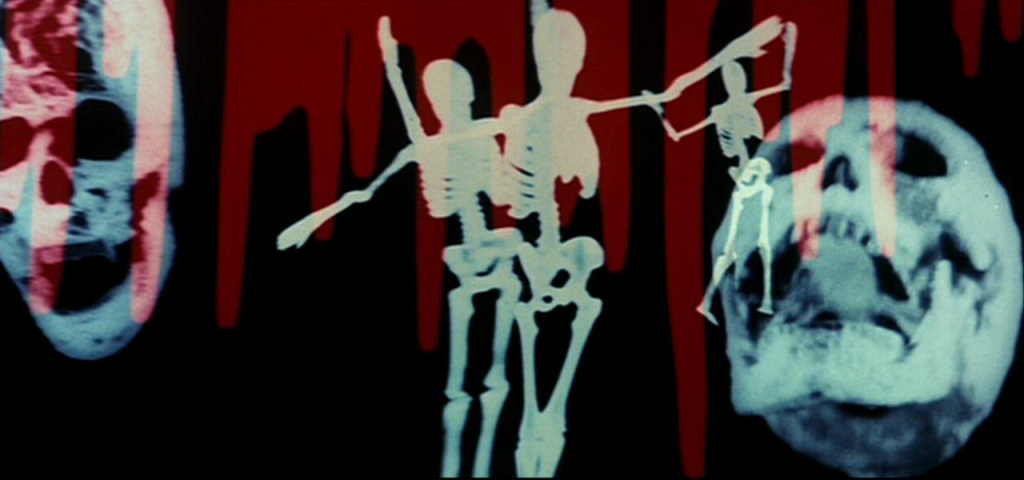
Whoa, did we get lost and wander onto Hausu?!?
Well, a lot more child like; this is the movie in which Godzilla damn flies. This did not go over well amongst kaiju fans, and with good reason, it’s dumb as hell. He achieves flight this by curling up into the Godzillasaurus fetal position and rocketing off using his dinosaur breath as propulsion. This means, of course, he’s flying backwards, but really, that’s just one problem on a long list with this idea. It’s not good, and it shouldn’t have been in the movie, but honestly, it’s not killing the picture for me. Especially not when I’m already looking at this as most likely being a vivid metaphor or a child’s fantasy. In any case, Godzilla takes on the abilities and characteristics needed of him, which again, harkens back to a more folksy and less self conscious form of story telling, and I can deal with it.
One more thing I want to high light; Godzilla’s incredibly violent “finish him” style execution of Hedorah. So awesome. Apparently, Godzilla really, really hates Hedorah. First, he kills him (we think.) He then proceeds to rip out the creatures eyes with his bare hands. Oh, snap, Hedorah is actually not quite dead, he makes a break for it and tries to fly away! Nope, Godzilla’s not having it, he chases him down, beats his ass a little, drags him right back, zaps the life out of him a little more, and then proceeds to desecrate the shit out of Hedorah’s lifeless corpse, a process which includes ripping it open, tearing chunks off and scattering them wildly all about, stomping on him, frying the individual pieces, and frantically looking around to make sure that there aren’t any extra pieces of him which need additional murdering. I mean, Godzilla makes absolutely sure. In every slasher film where they just assume the killer is dead and walk away, what they needed to do was take a page out of Godzilla’s Handbook; specifically, his Hedorah Policy, cuz damn is it thorough.
Banno was no young buck when this film came out, based on the information I was able to dredge up he was about 40 when he directed this picture, but that’s still twenty years younger than Ishiro Honda, the director of most Godzilla flicks up to that point, and clearly, Banno had a connection to the ideals of Japans youth culture that Honda did not. His radically new perspective is plainly felt in this film, and I think he did a great job with it.
In the end, judgement has been passed on this film long ago, and it wasn’t favorable. However, now there is an oportunity for a new generation to look at it with fresh eyes and make up their minds for themselves, and chances are, they’re going to hate it for all new, all different reasons. I actually think this is a pretty great entry in the series, and I love what Banno did with the ideas the franchise offered him.
B+

